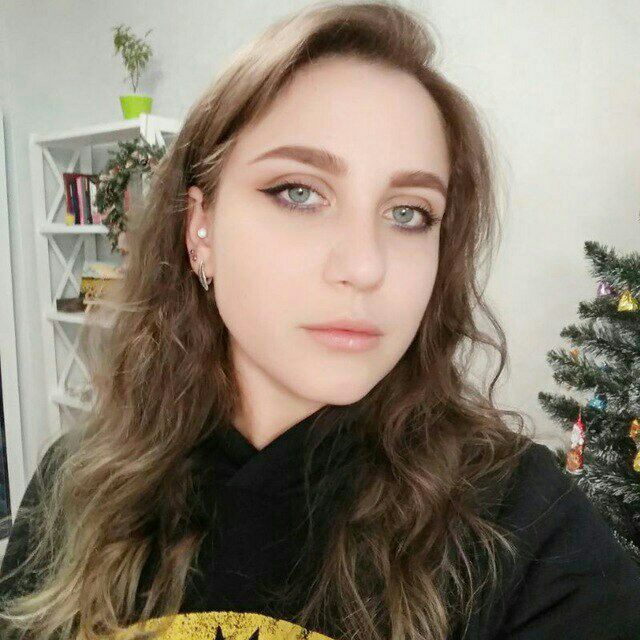
AI assistants for e-learning: top tools from Valentyna Hrinchenko. Part 2
For several years in a row, artificial intelligence has been firmly establishing itself as a powerful assistant in various areas of our lives. That is why we continue to introduce you to useful AI tools that facilitate the work of e-learning specialists.
Together with expert Valentyna Hrinchenko, we will share five tools that will help make learning materials more interactive, interesting, and engaging.
From generating professional videos to automated search query analysis. We invite you to take a closer look at the capabilities of each of these AI tools and learn how to apply them in your distance learning.
How can AI tools transform the approach to employee learning?
Valentyna Hrinchenko, Head of the Kernel Distance Learning Team
«I have a hobby of collecting and reading literature about anthropology, the brain, and how to master learning skills. The brain of a modern person works according to the rules that were formed thousands of years ago. Homo sapiens has existed for about 200-300 thousand years, and during this time our brains have not fundamentally changed. Moreover, from the biological point of view, it has not changed for millions of years. This means that we cannot learn faster or in a completely different way, no matter how much we would like to.
However, the way we work with information has changed significantly.
Now everyone has an interactive learning assistant. We receive information and simultaneously look for additions and clarifications. The lecturer will only have time to recommend a book, and we will have a ready-made chat. I can consult AI on the structure and content of courses, quickly search for data, and adapt examples for each audience. Even the voice acting for the videos is now done by artificial intelligence – my microphone has been in a box for a long time. Tests on theoretical materials are prepared instantly, and AI has learned to create templates for our distance learning system.Speaking of creative tasks, ChatGPT came up with the name for our team at the business game! We just argue for a long time about which of his best ideas to choose.
How does AI change video footage?
Video content is another story. Thanks to AI, our materials have become more creative. Sometimes we get results that make us both laugh and cry at the same time. For example, the screensavers for the course “In Ukrainian, Please!”
Dreams about the future.
I read futurists, so I’m looking forward to AI tools that analyze users’ emotions, determining when people are tired or lost motivation. I can imagine a training program that not only teaches but also takes care of the emotional state of participants.
I also dream about a personal AI assistant that would help me create the best personalized learning strategies and solve everyday issues, such as what to cook for dinner.AI is in trend.
What I have learned for sure is that training programs on AI tools are a constant must-have for the training department. We have to convey everything useful and interesting to our colleagues in a convenient format. We are already planning a new training program for this year.
There are moments that bring me down to earth, despite the rapid development of technology. For example, when I read my son’s questions to ChatGPT alongside incomprehensible technology-coded queries: “What can I cook with semolina and sugar?” or “How do I drive a fly away from my room?” I realize that even with the smartest systems, people still have room for philosophical reflections and mischief, which means we are still one step ahead of AI :)»
1. AI tool for creating videos with virtual actors: Synthesia
What does it do?
It generates video content using artificial intelligence.
Synthesia allows you to turn text into professional video content with virtual actors. The tool generates videos using artificial actors that can speak more than 120 languages, imitating realistic facial movements and gestures for maximum authenticity.
The platform supports customizing avatars, changing backgrounds, adding subtitles and other visual elements. The tool also offers a wide range of ready-made templates that make it easy to create videos, even without experience in video editing.
Price: from $18 per month.
How to use it in e-learning?
Synthesia can be used in e-learning to create visual explanatory videos, tutorials, and presentations. Instructors can also use it to record video course announcements, explain complex topics, or create interactive lessons where students can interact with a virtual tutor.
Link: https://www.synthesia.io
2. Virtual AI assistant for education and research: Perplexity
What does it do?
It provides accurate answers to questions.
Perplexity AI is an artificial intelligence-based search engine that uses modern language models to provide accurate and understandable answers to questions.
Unlike traditional search engines, Perplexity doesn’t just provide links, but synthesizes information from trusted sources and presents it in a clear text format. Answers are supplemented with quotes and suggestions to clarify the query, making it easier to find the data you need.
Perplexity can also generate various types of content, including texts and images, similar to ChatGPT. Thanks to daily updates of web content indexing, the system provides up-to-date information on the latest news and other important topics.
The tool is available in a web version and also has a convenient app for iOS and Android, which allows you to use it at any time and on any device.
Price: 20$ per month.
How to use it in e-learning?
Teachers and instructors can use Perplexity to prepare teaching materials. Quickly collect information for presentations, courses, programs, or create test tasks.

Example of a generated test with Perplexity
Link: https://www.perplexity.ai
3. A tool for converting audio to text: Transkriptor
What does it do?
It creates automatic transcription of audio and video.
The tool supports transcription in more than 100 languages and works with all audio and video file formats. Thanks to the built-in AI chat assistant, you can summarize the transcription or get answers based on the analysis of your content.
Transkriptor also allows you to transcribe public audio and video via a link. For editing transcriptions, the platform has a multifunctional text editor that allows you to correct mistakes and slow down the audio for more accurate transcription adjustments.
Transkriptor is available as a cloud-based platform, as well as iOS and Android apps.
Price: from $10 per month.
How to use it in e-learning?
Methodologists and teachers can use Transkriptor to quickly convert audiovisual content into textual materials:
– transcription of video lectures and webinars into textual summaries;
– creating subtitles in different languages for educational videos;
– transcription of expert interviews and panel discussions;
– preparing text versions of podcasts and audio courses;
– documenting group discussions and brainstorming sessions.
This will help ensure the accessibility of training materials for employees with hearing impairments and create a knowledge archive in text format for future use.

Link: https://transkriptor.com
4. AI assistant for learning: Chat GPT Plus
What does it do?
It generates answers to questions.
An improved paid version of the popular Chat GPT. It is capable of conducting dialogues, answering questions, and performing various text-based tasks.
In the Plus version, the model is faster and provides more accurate answers because it uses more training data and deeper models to analyze the context.
Chat GPT Plus supports multiple languages and can be used for a variety of scenarios, such as generating texts, answering complex questions, or even programming.
Price: 20$ per month.
How to use it in e-learning?
In e-learning, Chat GPT Plus can be used for a wide range of tasks:
– Writing a variety of texts, from training materials to idea generation;
– Creating images and visuals to complement learning content;
– Explaining complex concepts and terminology;
– Create questions for tests, surveys, and discussions;
– Developing curricula and learning paths;
– Providing personalized recommendations and feedback.

Link: https://chatgpt.com
If you would like to learn more about practical examples of using Chat GPT in e-learning, we recommend reading our article. In it, we have discussed in detail the features of the free version of this AI assistant: ChatGPT – an indispensable partner for e-learning specialists? Where and how it can be useful in corporate learning
5. A tool for creating presentations: Gamma
What does it do?
It helps to create professional presentations.
Gamma generates slides and presentation structure based on a text description or keywords. The service has a library of ready-made templates and automatically selects visual elements based on the audience, topic, and style of the presentation.
In addition to the standard features, Gamma offers various interactive elements such as videos, graphs, and polls that can be easily integrated into slides to create more dynamic presentations.
The tool also provides recommendations on how to improve the content of the presentation and supports collaboration on the presentation.
Gamma works online through a browser and supports export to popular formats such as PDF and PowerPoint, making it versatile across platforms and devices.
Price: from $10 per month.
How to use it in e-learning?
Teachers and methodologists can use Gamma to quickly create educational presentations, develop visually appealing materials, and prepare interactive content for webinars and online courses.

Link: https://gamma.app
Conclusion
AI technologies continue to change the way we create training materials, offering new opportunities for automating and personalizing content. By using AI assistants such as Synthesia, Perplexity, Transkriptor, Chat GPT Plus, and Gamma, you can make training more engaging and interactive for your employees.
However, we shouldn’t forget that AI tools are in no way a substitute for human skills and experience. Especially in corporate training, where a personalized approach to each employee and their needs is a key success factor. And it is the harmonious combination of professional expertise and AI capabilities that will help bring training to a new level of quality and efficiency.



































